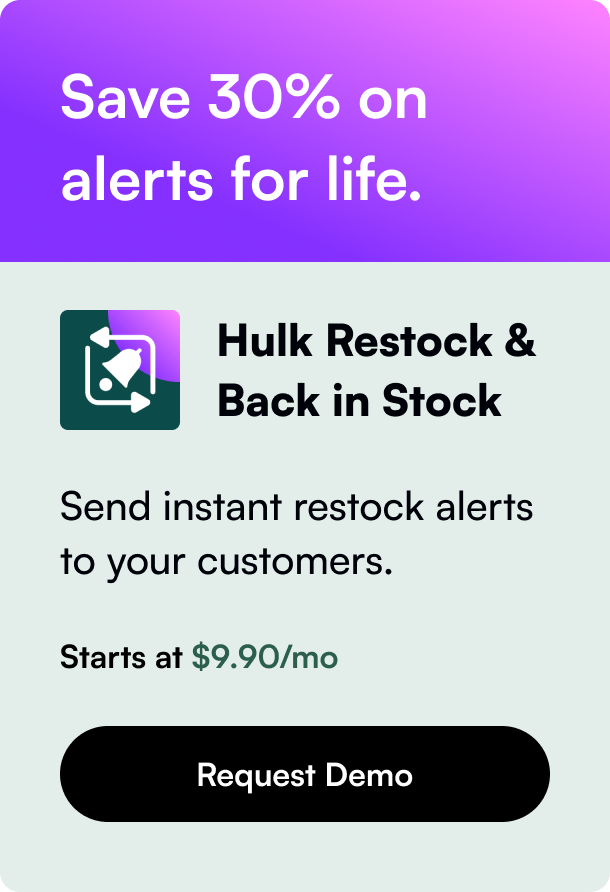Table of Contents
Introduction
Are you interested in extending the reach of your ecommerce business? Have you considered leveraging the power of Amazon's colossal marketplace to bring your products to a wider audience? If so, integrating your Shopify store with Amazon might be the optimal path for your business. This comprehensive guide will navigate you through the essentials of selling on Amazon using Shopify, offering strategic insights and actionable steps to harmonize these two powerful platforms for amplified success.
Understanding the Landscape
Amazon isn't just a marketplace; it's an ecommerce powerhouse, attracting millions of loyal customers worldwide. By blending Shopify’s elegant system with Amazon’s extensive customer base, you prepare your business for unprecedented expansion. But before you dive into the integration, there are some prerequisites to take care of.
Why Integrate Shopify with Amazon?
Integrating your Shopify store with Amazon can unlock several benefits:
-
Increased Visibility: With millions of active customers, Amazon can significantly boost your brand's exposure.
-
Customer Trust: Amazon’s reputation can lend credibility to your store, encouraging new customers to trust your brand.
-
Streamlined Management: Centralize inventory and order management for both platforms in Shopify.
-
Leverage Fulfillment: Utilize Amazon’s fulfillment services for efficient logistics and shipping.
-
Market Insights: Gain valuable data on consumer behavior and product performance on Amazon's marketplace.
Key Considerations
Before you integrate:
- Ensure your products comply with Amazon's policies.
- Acquire necessary GTINs or UPCs for each product.
- Understand the financial implications, including Amazon’s seller fees.
Crafting Your Integration Strategy
Starting Standards
Before we proceed, make sure you:
- Have an active Shopify store plan.
- Own a Professional Amazon Seller account.
- Ensure your products fall under categories permitted by Amazon.
Shopify and Amazon: Harmonizing the Ecosystems
-
Initial Setup: Connect your Shopify store to Amazon by adding Amazon as a dedicated sales channel through the Shopify admin.
-
Inventory Management: Opt for Shopify to automatically handle your inventory updates or manually align your Amazon stock within Shopify.
-
Listing Products: Create detailed listings on Amazon for your Shopify products - this includes titling, descriptions, images, and selecting appropriate categories.
-
SEO Optimized Content: Craft compelling product descriptions and titles infused with relevant keywords to improve visibility on Amazon.
-
Order Fulfillment: Choose whether to use Amazon's FBA service or fulfill orders through Shopify, ensuring a seamless fulfillment process across platforms.
Diving Deeper: Advanced Integration Techniques
-
Automated Repricing: Implement dynamic pricing tools to stay competitive on Amazon.
-
Customer Relationship Management: Use the integration to manage customer interactions and reviews corresponding to Amazon sales.
-
Analytical Insights: Harness Shopify's analytics in tandem with Amazon's seller metrics to refine marketing and sales strategies.
Staying Compliant and Competitive
- Keep abreast of Amazon's changing policies and adapt your Shopify integration accordingly.
- Regularly update product listings for accuracy and freshness.
- Actively monitor order management to maintain high seller ratings on Amazon.
Conclusion
The intertwining of Shopify and Amazon can elevate your online retail endeavor to new heights. By following regulatory guidelines, strategically managing listings, and providing excellent customer service, you solidify your ecommerce footprint across both platforms. Remember, the synthesis of Shopify’s intuitive interface with Amazon’s substantial market influence can be the catalyst for the next level of your business's evolution.
Final Insights
Embrace the union of Shopify and Amazon as more than just an integration of services—it's a fusion of opportunities, ready to be harnessed for the growth and diversification of your ecommerce journey.
FAQs
Q: Is a professional Amazon seller account mandatory for the integration? A: Yes, you need to have a Professional Amazon Seller account to integrate with Shopify and sell on Amazon's marketplace.
Q: Can I automate inventory management for products sold on both Shopify and Amazon? A: Absolutely, Shopify allows you to sync inventory levels with Amazon, ensuring cohesive stock management across both platforms.
Q: Will Shopify integration help with Amazon order fulfillment? A: Yes,orders from Amazon can be fulfilled using your preferred method, and Shopify can help track and manage those orders.
Q: How can I ensure my product listings appeal to both Shopify and Amazon customers? A: Focus on creating engaging, informative content that adheres to SEO best practices. Additionally, make sure your brand’s messaging is consistent across both platforms.
By implementing the strategies outlined in this guide and staying adaptable to the ecommerce landscape's ebb and flow, your business is poised for a thriving expansion into one of the world's most formidable online marketplaces.








